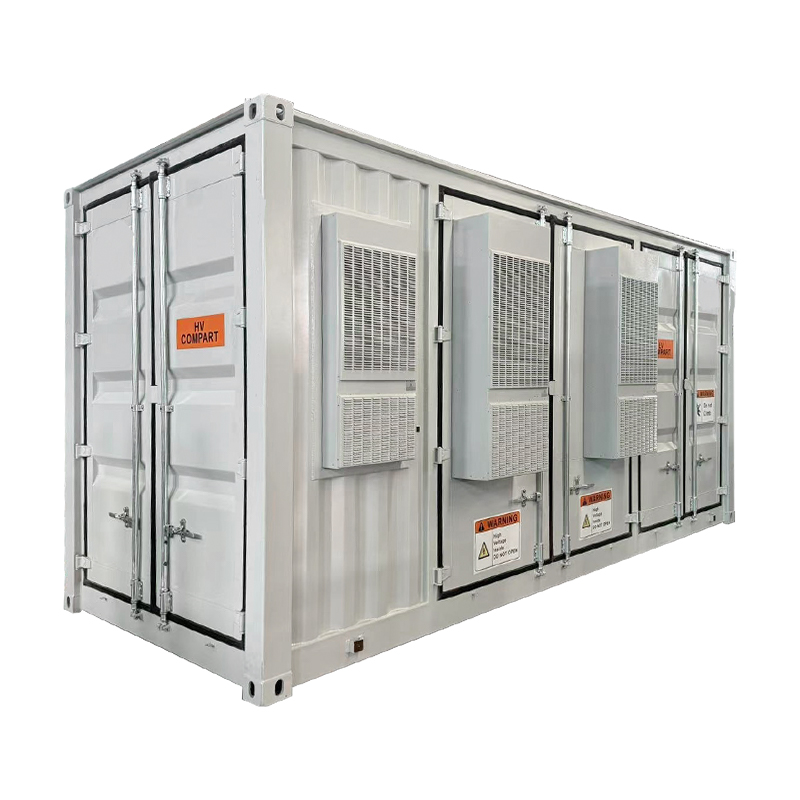Energy-Saving Single-Phase Oil-Immersed Pole-Mounted Transformer
15KVA 13.8KV/0.4KV
See DetailsIn today’s rapidly evolving energy landscape, the need for more efficient, scalable, and reliable power systems has never been more crucial. Outdoor prefabricated substations (OPFs) have emerged as a significant solution to meet these demands, offering a modern, flexible, and cost-effective alternative to traditional substations.
What are Outdoor Prefabricated Substations?
Outdoor prefabricated substations are compact, pre-engineered, and factory-built units that house essential equipment for electricity distribution and transformation. Unlike conventional substations that require extensive on-site construction, OPFs come pre-assembled, often in modular form, making them much quicker to deploy. These substations are designed for outdoor installation, which means they can be placed directly at the point of demand, whether it’s in urban, industrial, or remote locations.
The Growing Importance in Modern Power Infrastructure
The global shift toward cleaner and more decentralized energy systems is driving the need for flexible, efficient power distribution solutions. As renewable energy sources like wind and solar are increasingly integrated into the grid, the ability to manage and distribute electricity becomes more complex. Outdoor prefabricated substations are proving to be a key enabler in this transformation.

Here are several reasons why OPFs are becoming a critical component in modern power infrastructure:
Reduced Installation Time and Cost:
One of the most significant advantages of OPFs is their rapid deployment. Since the substation is prefabricated in a controlled factory environment, the installation process is far quicker than traditional on-site construction. This efficiency reduces labor costs, minimizes delays, and accelerates the overall time-to-service for power systems.
Flexibility and Scalability:
OPFs are highly modular, which allows for easy scalability and customization based on the specific needs of the area they serve. This flexibility is particularly beneficial in rapidly growing urban centers or in areas where energy demand fluctuates.
Reduced Environmental Impact:
Traditional substations can have a significant environmental footprint, both in terms of land use and construction. OPFs, by comparison, are more compact, require less land area, and have a smaller environmental impact during installation. Many designs also incorporate energy-efficient technologies that align with sustainability goals.
Enhanced Reliability and Safety:
Outdoor prefabricated substations are designed to withstand harsh weather conditions and external challenges, such as flooding or extreme temperatures. Their robust construction ensures that they can provide continuous service with minimal risk of failure, even in remote or challenging environments.
Ease of Maintenance and Monitoring:
The design of OPFs often includes easy access for maintenance personnel, ensuring that routine checks and repairs can be conducted with minimal disruption. Many modern OPFs also come equipped with smart monitoring systems, allowing for real-time data collection and performance analytics, which enhances their reliability and operational efficiency.
Applications in Various Sectors
The versatility of outdoor prefabricated substations makes them suitable for a variety of applications across different sectors:
Urban Power Distribution: In densely populated cities, where space is at a premium, OPFs are an ideal solution for compact, efficient power distribution.
Industrial and Commercial Use: Large factories, manufacturing plants, and commercial complexes can benefit from the quick installation and scalability of OPFs to meet fluctuating energy needs.
Renewable Energy Integration: OPFs play a critical role in integrating renewable energy sources such as wind farms, solar plants, and hydroelectric facilities by acting as a hub for power transformation and distribution.
Remote and Off-Grid Locations: For areas that are difficult to access or require temporary infrastructure, OPFs provide a reliable and efficient way to deliver power without the need for extensive on-site construction.
The Future of Outdoor Prefabricated Substations
As the demand for renewable energy and decentralized grids continues to rise, outdoor prefabricated substations will likely become even more integral to the global power infrastructure. Their ability to support smart grid technology, provide energy storage solutions, and integrate with distributed energy resources (DERs) makes them a key enabler of the energy transition.
With advancements in materials, automation, and smart technology, future OPFs may incorporate features such as artificial intelligence for predictive maintenance, advanced energy storage capabilities, and even greater modularity to adapt to rapidly changing energy needs.
Conclusion
Outdoor prefabricated substations are not just a trend but a crucial element in the development of modern power grids. Their ability to provide a fast, scalable, and reliable solution for energy distribution makes them indispensable in the face of growing global energy demands and the shift towards more sustainable power systems. As the world continues to embrace renewable energy and smart technologies, OPFs will undoubtedly play a central role in shaping the future of power infrastructure.
Contact Us